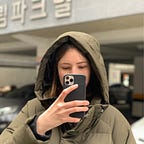03 | Micro UX: Necessary Disorder
Group members: Damul Yang, Moxue Jia, Giada Han and Maria Shuttleworth
<<< For my previous project on Micro UX, click here.
Revisiting the Gardens.
We begun the week by re-visiting the garden, where we got permission to gather fallen leaves and flowers. This was in response to previous feedback that we had simulated reality, not observed.
Sadly we were unable to see the collected leaves under the microscope as they were too thick, and when we tried to dissect them they broke apart ruining their natural pattern. So, we used the flower petals which were thinner and much easier to see.
Experimenting & more research.
Given our interest in creating a new visual plant language, the group did some desk research about how plants communicate. Giada found an article that suggested plant language could be “a valuable step towards the de-objectification of plants and the recognition of their subjectivity and inherent worth and dignity” (Gagliano, 2016).
This struck a chord with me, as I felt the most useful aspect of creating a language would be to de-mystify plants and their complexity, hopefully causing people to re-evaluate their worth.
In my mind, all living beings represent a necessary disorder — one that is hidden at surface-level but chaotic up close. Our research with the microscope really highlighted the messy inner-workings in organic materials, and once I mentioned this to the group they all agreed that embracing this aspect could be a potential direction. Giada and I began creating animations based on the microscope images to research through design.
However, we were still struggling with how to “unflatten” (Sousanis, 2015) our idea. At the moment our plans solely utilised visuals, and we needed to enrich the experience by pairing it with something more tangible. For example, Moxue and Damul found that plants communicate with many other factors: sound, vibration & movement, electricity (PLEASED, 2021), chemicals (McGowan, 2013) and genomes (Krupinska et al, 2020).
Vibration and movement especially inspired us, thinking that we could integrate gestures to create an interactive language, encouraging an abstract conversation between human and plant. It would not have to be an “understandable” conversation, but one that encourages each person to interpret it in their own way.
Presentation Feedback.
We explained that our next steps would be to observe a plant under different conditions e.g. sunlight vs darkness, over 24hrs and then use the perceivable changes in state as a basis for a TouchDesigner interaction: the plant would exclaim a need through a change in pattern, and then the human would meet its needs e.g. water the plant, making the pattern return to normal indicating it is healthy again.
We received fair criticism on this idea as people were unclear on what their experience would be as a participant, also mentioning that this would be entirely reliant on us being able to capture changes in state on camera — what if there wasn’t enough of a change?
Our feedback left us with a lot of thinking to do: How can we get meaning from a pattern? Why are we abstracting away from real plant data with computational reproduction? Are these all purely aesthetic decisions?
This made me think — we need to focus on framing. Currently we do not have a solid reason for the decisions we are making, and thus need to be careful in make a project that is, as Al put it, “decorative not decoration”. If I could start the week again, I would have begun by pushing framing the problem so that we can go forward in a set, specific direction.
For my next project on Micro UX, click here. >>>
References.
- Gagliano, M., 2016. Language and Making of Meaning in Plants. [online] Sonar. Available at: <https://wearesonar.org/2016/06/16/language-making-of-meaning-in-plants/> [Accessed 10 May 2021].
- Krupinska, K., Blanco, N.E., Oetke, S. and Zottini, M., 2020. Genome communication in plants mediated by organelle–nucleus-located proteins. Philosophical Transactions of the Royal Society B, 375(1801), p.20190397.
- McGowan, K., 2013. The Secret Language of Plants. [online] Quanta Magazine. Available at: <https://www.quantamagazine.org/the-secret-language-of-plants-20131216/> [Accessed 10 May 2021].
- PLEASED, 2021. PLEASED | PLants Employed As SEnsing Devices. [online] Pleased-fp7.eu. Available at: <https://pleased-fp7.eu/> [Accessed 9 May 2021].
- Sousanis, N., 2015. Unflattening. Cambridge, Massachusetts: Harvard University Press, p.32.
- Jacob, E., 2017. Necessary Disorder. [online] Necessary-disorder.tumblr.com. Available at: <https://necessary-disorder.tumblr.com/> [Accessed 11 June 2021].
